Disordered Bodies Fractured Minds (Private M., Patient A. & Traveller H.)
Falke Pisano
After several years of working on the series Figures of Speech (2005-2010), I introduced, in September 2011, a new series of propositions and inquiries under the title The Body in Crisis.
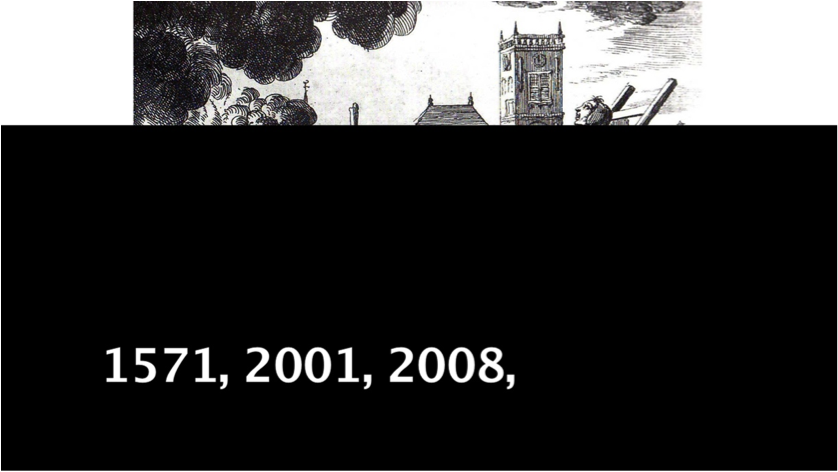
Video still, The Body in Crisis (Notes on Distance, Repetition, and Representation), 2011
The main organizing principle of the works, which are brought together under the title The Body in Crisis, is the ‘act’ of naming six events or occurrences—six events that together form a repetition, a repetition of the moment that a body is thrown into a state of crisis.
Each event refers to a historical moment in which the body finds itself in a state of crisis through a change of living conditions (be these institutional, hegemonic, administrative, and/or physical). I chose events and occurrences that would allow me to consider the definition of the subject, the perception of the body (along with the division between body and mind), the forces at work on the body and what happens when living conditions change. These events and occurrences would also allow me to reflect on what happens within the body, considering the body as a site of de- and re-territorialization, and as the site at which said conditions are actualized again and again.
I have defined each event by a year, a place, a change in concrete conditions, a sentence along the lines of “body X becoming body Y” (or “X body becoming Y body”) and one or two images.
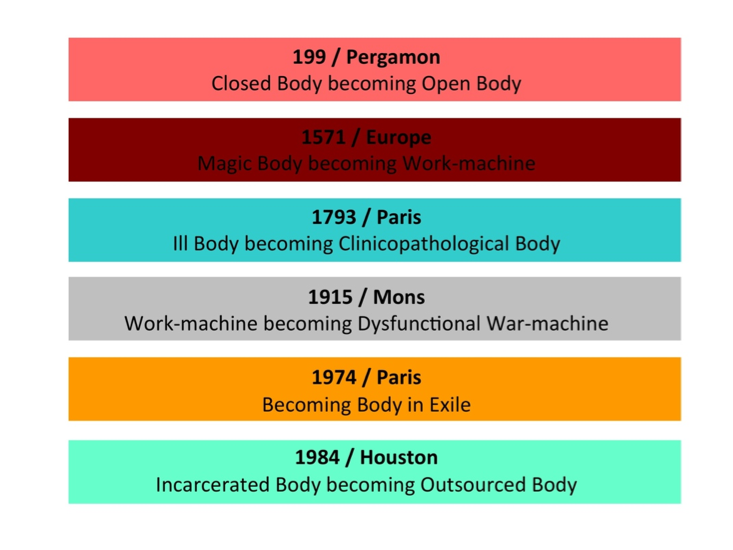
Slide from Powerpoint, The Body in Crisis, artist talk
Bearing in mind the maxim that crises now constitute the rule, I’ll be considering historical reiterations of the human body in moments of crisis, as well as formal possibilities to represent the body in crisis in the realm of art. Two key concepts in the context of this discussion are distance and repetition.
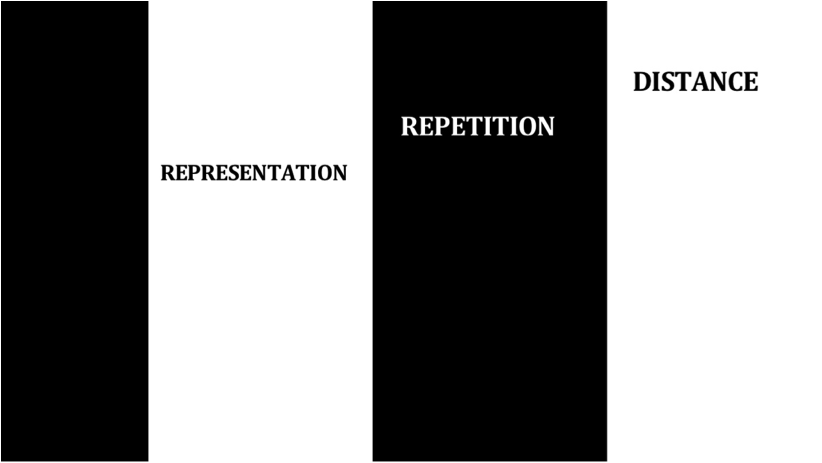
Video still, The Body in Crisis (Notes on Distance, Repetition, and Representation), 2011
Distance, in both the sense of an event that takes place at a historical or geographical distance and of an obstruction within the triangle of object-representation-subject.
Repetition as a method or strategy to make this obstruction productive. Certain forms of representation produce sensation and affect in the form of an indefinite, destabilizing, transformative repetition. The repetition in question is not a repetition of the same, but that of singular moments establishing sameness.
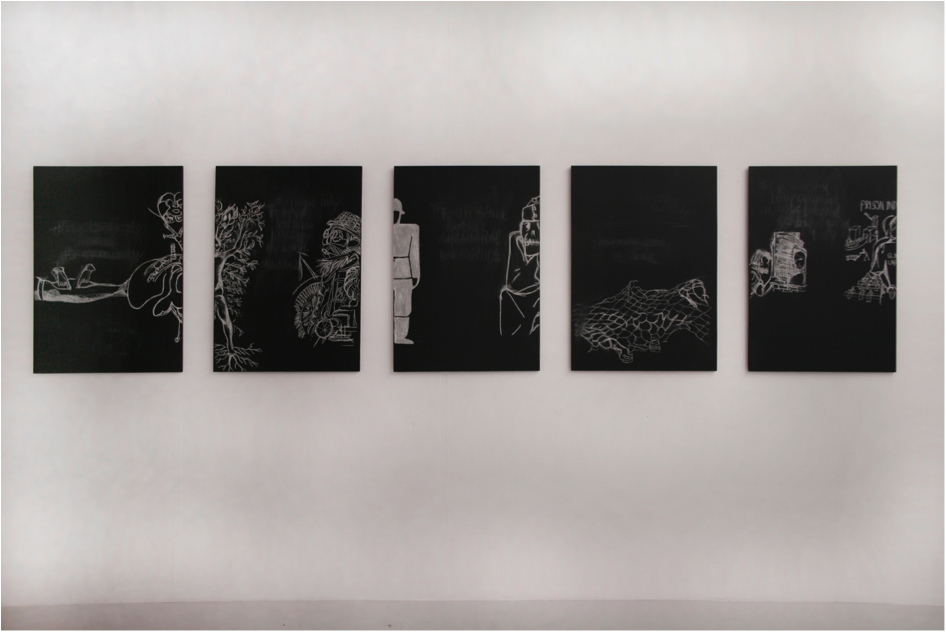
The six events that constitute said repetitions are:
199: Closed Body becoming Open Body
Approximate year of death of Galen of Pergamum, an anatomist / physicist who developed the theory of the four humors, which placed the body in a direct causal relationship to the external through fluids; this theory was deemed relevant until the 16th century.
1571: Magic Body becoming Work Machine
One of many moments of transition from feudalism to capitalism and the rise of mechanical philosophy, but also the persecution of women deemed unproductive with respect to the capitalist structure.
1793: Ill Body becoming Clinicopathological Body
Antoine François de Fourcroy and François Chaussier redesign French medical education by creating the first university hospitals in which medical treatment and education are linked.
1915: Work Machine becoming Dysfunctional War Machine
After extended trench warfare, the first case of shell shock was reported near Reims. The definition and treatment of shell shock changed in the years to come, along with that of other mental ailments.
1974: Becoming Body in Exile
Paris 1968 was the context for Lygia Clark’s rewriting of the ideological disposition of the self and the body (and for the work Rede de Elástico, 1974).
1984: Incarcerated Body becoming Outsourced Body
The Corrections Corporation of America opened its first private prison in Houston. As the government outsourced the incarceration of its prisoners, inmates were put to work as cheap labor, their wages adding to the profits of commercial prisons.
The above events are introduced, repeated and (re-) formulated within the three main works belonging to The Body in Crisis. These works will be readapted, according to a proper logic, each time they are shown.
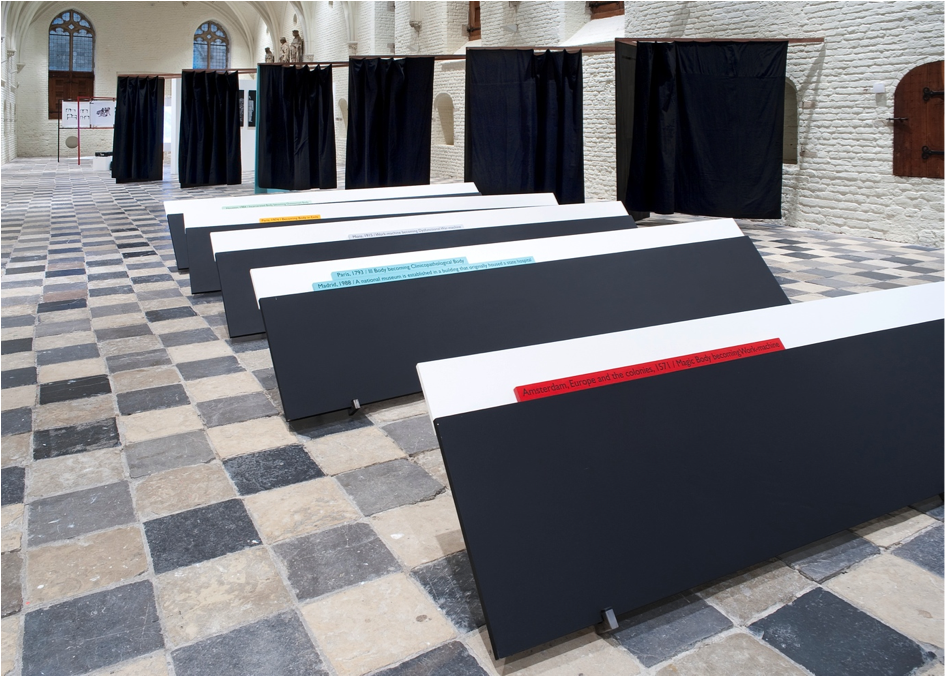
Exhibition view, The Body in Crisis, De Vleeshal Middleburg, Netherlands, 2012
Each of these works bears qualities ascribed to display. I would describe the first work as a carrier, as a surface for notations depicting specific events. The second is something of a diagram, a line of thought depicting distance, obstruction, repetition, and representation. The third work makes the most straightforward use of a system of display, to actually display images, but it has to be seen in relation to a performance, or a video translating a performance.
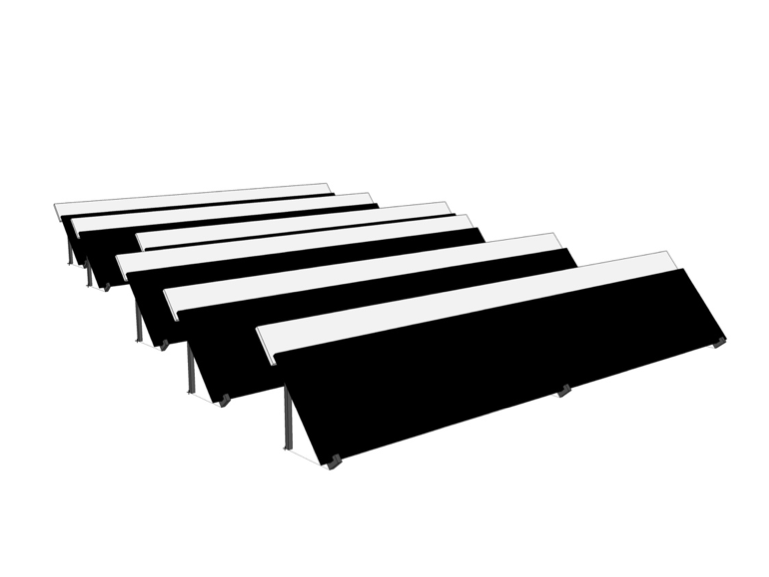
Sketch of Obstacles 1-6, 2010
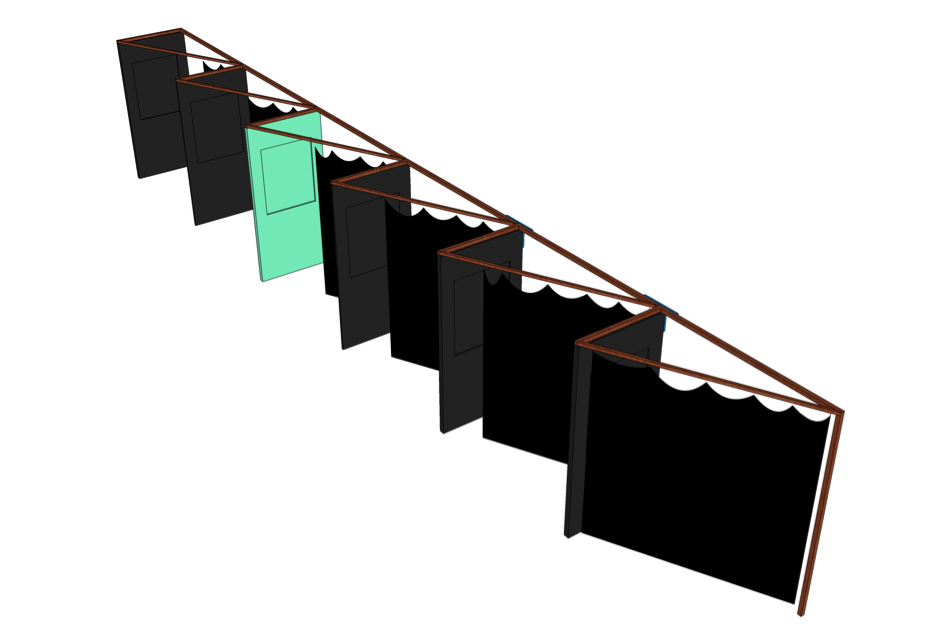
Sketch of Structure for Repetition (not representation), with five blackboard panels, 2011
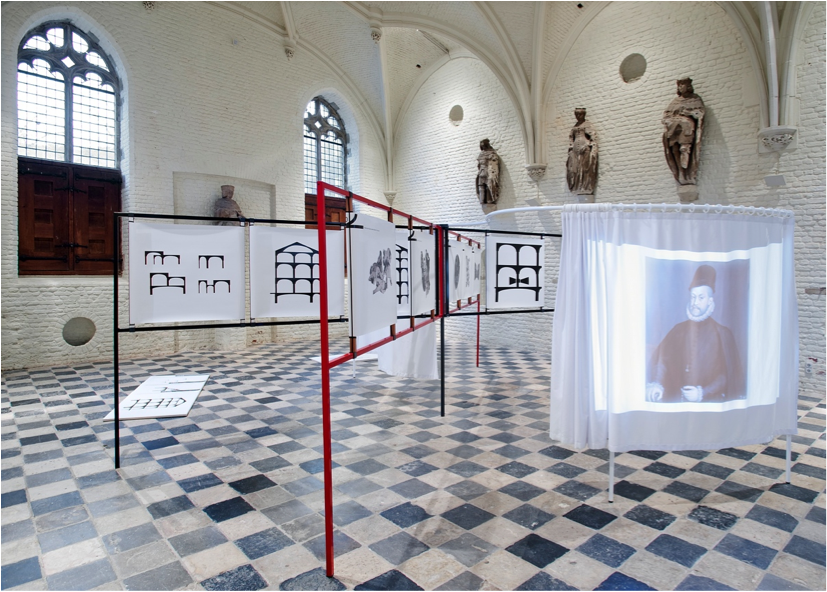
The Body in Crisis (Treating, Housing, and Depicting), 2012
Structures 1 and 2 form the backbone of The Body in Crisis, to which, in a modular way, new works will be gradually attached. Structure 3 will facilitate an entirely new narration if the exhibition context allows for the necessary site-specific research.
Disordered Bodies Fractured Minds (Private M., Patient A. & Traveller H.)
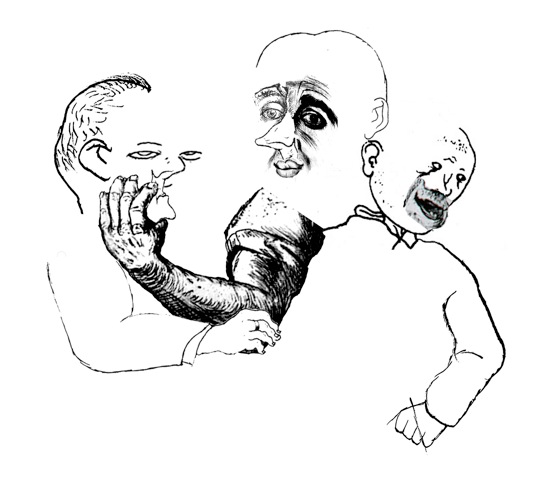
men returned . . . grown silent—not richer, but poorer in communicable experience . . . What ten years later was poured out in the flood of war books was anything but experience that goes from mouth to mouth. And there was nothing remarkable about that. For never has experience been contradicted more thoroughly than strategic experience by tactical warfare, economic experience by inflation, bodily experience by mechanical warfare, moral experience by those in power.
—Walter Benjamin, 1933, quoted by Giorgio Agamben in “Infancy and History”
I still have the use of my limbs (but for how long), but I have long since ceased to be in control of my mind […], —Antonin Artaud
Reflecting on the year 1915, and the first report of shell shock, my intervention for the Red Hook Journal will consist of a series of audio fragments (collages) linked to an image that will be uploaded sequentially over the course of three months.
Each audio fragment will consist of a first-person account in which an attempt is made to relate the experience of a fragmented body and / or a consciousness. How is it possible to speak when it is not possible to discern a coherent self?
Audio will be drawn word by word from different audio archives, from visual material such as the World War II drawings of George Grosz and Otto Dix, and from writers including Antonin Artaud and Henri Michaux.
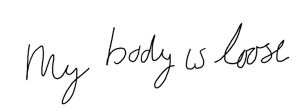
I will upload the fragments while working on a video diptych addressing self-perception (and self-description) in states of mental and physical disintegration following trauma, mental illness, or substance consumption. While the first video will focus on disintegration caused by violence, the second will address the possibility of a productive moment within the disordered, fragmented, and de-territorialized body and mind.
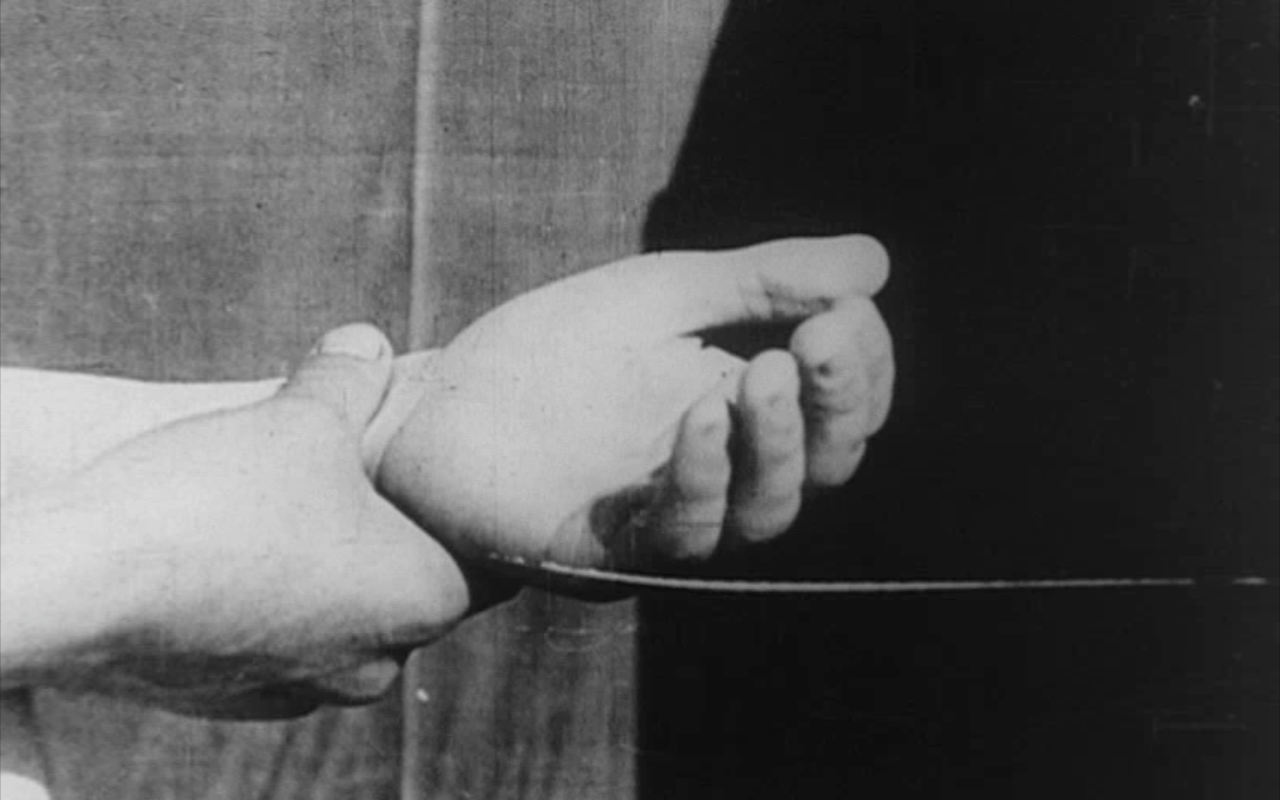
Falke Pisano is an artist based in Berlin. Upcoming exhibitions include a solo show at Hollybush Gardens, London, the group show Beyond Imagination, at the Stedelijk Museum Amsterdam, and the Amsterdam Pavilion (with Nicoline van Harskamp and Jeremiah Day) at the Shanghai Biennale 2012.
-- Download Disordered Bodies Fractured Minds (Private M., Patient A. & Traveller H.) as PDF --